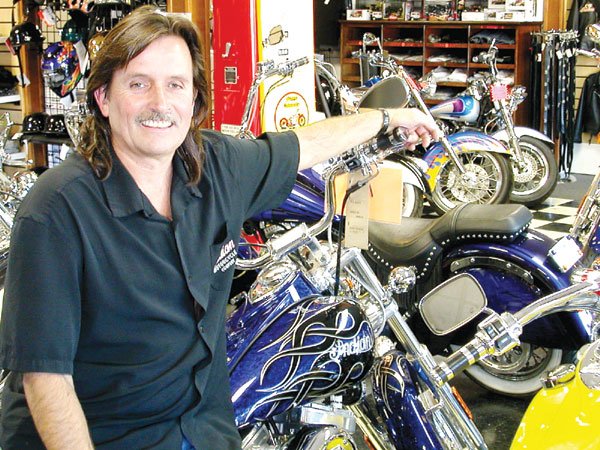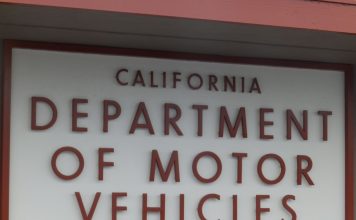GILROY
– Only hours after telling dealers to cancel their flights to
Las Vegas for the unveiling of Indian Motorcycle’s sporty,
redesigned 2004 models, officials from
”
America’s first motorcycle
”
company told its 380 employees Friday afternoon they were out of
work. The Gilroy-headquartered company was out of money.
The icon brand that began in 1901 and produced the motorbike
Arnold Schwarzenegger rode in the sci-fi
”
Terminator
”
movies is terminated.
By PETER CROWLEY and ERIC LEINS
Staff Writers
GILROY – Only hours after telling dealers to cancel their flights to Las Vegas for the unveiling of Indian Motorcycle’s sporty, redesigned 2004 models, officials from “America’s first motorcycle” company told its 380 employees Friday afternoon they were out of work. The Gilroy-headquartered company was out of money.
The icon brand that began in 1901 and produced the motorbike Arnold Schwarzenegger rode in the sci-fi “Terminator” movies is terminated.
The Indian factory – one of the top-five Gilroy employers – closed its doors Friday because an eight-figure investment deal fell through earlier that week.
The deal had been crucial to the company’s future, Executive Vice President Fran O’Hagan said. It didn’t matter that 2003 was on track to be a record sales year.
“It came as a complete surprise to everybody, including the top management,” O’Hagan said Friday.
For the workers whose careers are now on hold, the shocking news left them feeling “burned-out,” in the words of veteran employee Daniel Tice.
“It’s a real drag,” said Tice, who had been with the company since it roared back to life in late 1998 – 45 years after the original Indian Motorcycle folded in Springfield, Mass. “I was a real motorcycle enthusiast, and this was a real dream, reviving Indian.”
What happened?
The company needed enough money to carry it just a few more months, until its 2004 bikes were ready to be sold. Without the investment it was counting on, O’Hagan said Indian didn’t have the cash to finish building the 2004 models and plan its future products. Even if the company had stopped its product-planning to fund 2004 production, it “would go another six months, and then it would close,” O’Hagan said.
“The motorcycle industry is not for the faint of heart,” O’Hagan said. “(It) takes an awful lot of capital to succeed. … In the end, the company didn’t have the money.
“On the other hand, our 380 employees and 200 dealers have something to be proud of, and that’s 13,000 beautiful Indian motorcycles driving around the country.”
More Indian motorcycles have been selling than ever before. May was the firm’s best sales month ever, although September was on track to beat it. This year, O’Hagan added, Indian was on track to sell 4,500 bikes, compared to 3,822 last year. Indian planned to build 6,000 machines for 2004.
What’s next?
O’Hagan said Indian Motorcycle’s assets will soon be returned to its creditors, and it’s possible bankruptcy will be claimed. The company is not in a position to be bought, he said.
The future of its trademark – purchased for $18 million in 1998 – “remains to be seen.” While there is no plan to reopen the plant in the future, O’Hagan wouldn’t rule out the possibility.
“If you study the history of Indian, there are plenty of twists and turns, so I’m sure there will be another chapter,” O’Hagan said.
Indian’s approximately 200 dealers will have to fend for themselves. Some may close when they sell their current stock. Others might switch brands or sell custom or vintage cycles.
Don Nofrey, who owns Gilroy’s Indian dealership, said he isn’t ready to close his shop doors yet and will hold out indefinitely.
“Indian will be back,” Nofrey said. “It’s not going to die.”
Nofrey figures that Indian bikes will now become collectors’ items.
Breaking the news to employees
At the factory, it started out like any other Friday.
“They handed out our paychecks at lunch time, and everything seemed fine,” an assembly-line worker told The Dispatch on condition of anonymity.
Around 2:15 p.m., Indian President and Chief Executive Officer Lou Terhar broke the news to shocked and saddened workers.
“What they told us was, we (the workers) were doing fine, we were doing a hell of a good job, but they couldn’t find anyone to give us money,” the assembly worker said. “People were shocked and sad and a little angry, kind of a mix of all those things. There were tears because we were kind of like a family. I enjoyed working there. Every once in a while you’d see a pro athlete or movie star come by. I had lots of friends there.”
While it’s believed most employees didn’t see the shutdown coming, some said they’d seen the writing on the wall that something big – although probably not this drastic – was about to go down.
“There were rumors going around for about two months or more,” the assembly worker said. According to one of these rumors, Indian was to move its headquarters to a cheaper location. Alabama, with its low property taxes, was a candidate.
Indian’s employment peaked in 2000 with 610 workers. The biggest series of layoffs – about 200 – came in late 2000 and early 2001.
“(By 2003), Indian was producing more bikes with fewer employees,” O’Hagan said.
Finding jobs for Indian’s displaced workers is the first thing O’Hagan personally plans to do until he himself finds another job, he said.
“The employees were doing a wonderful job,” O’Hagan said. “They could work anywhere in the industry.”
A few employees will stay on briefly to help with the shutdown. About 100 of Indian’s employees had office jobs. The remaining three-quarters were involved in production. None received severance pay, O’Hagan said.
City stunned
The news sent shockwaves through the community over the weekend as city leaders digested the impact of losing such a large employer and, potentially, a Monterey Street dealership showcased in a downtown that business activists are working feverishly to revive.
Gilroy economic guru Bill Lindsteadt isn’t giving up on the company.
“I want to see what we can do to bring them back,” said Lindsteadt, the executive director of the Gilroy Economic Development Corporation. “They were doing well. Sales were up, production was up. I don’t think the Indian days are over.”
Lindsteadt said the EDC had known of Indian’s efforts to land more capital but had not been approached for help. Lindsteadt said federal and state loan programs could be available to Indian through the EDC.
“My first call Monday morning will be there (to Indian),” Lindsteadt said.
Lindsteadt said he was crushed by Friday’s news.
“It hurt,” he said. “You work hard to bring good jobs to the city and something like this happens. I feel sorry for all those who lost their jobs.
“When you lose over 350 manufacturing jobs, it’s going to have a significant effect on Gilroy, and it will add to the existing unemployment problem we’re having. How you approach this now is to redouble the efforts to continue to bring new manufacturing companies here.”
City councilmembers also absorbed the news this weekend.
“I’m saddened at the loss of nearly 400 well-paying light manufacturing jobs in our town, as well as the death of a nameplate that has been in existence for over a hundred years,” Councilman Bob Dillon said. “I hope someone buys the company and carries on.”
Sadness and speculation
The motorcycle company’s demise also hit hard with the man who helped bring it to Gilroy.
“This is horrible. My heart goes out to them,” said Rey Sotelo, former Indian Motorcycle president. “There is nothing positive in this situation for anyone.”
Sotelo left the company in January 2002 over philosophical differences. He wanted to play to the bike’s vintage significance, but the board of directors insisted on making the bike a sportier version of its old self, he said.
“I can’t say I was too surprised,” Sotelo said of Friday’s closure. “The focus was no longer on the motorcycle. … After a while I realized I was getting in the way. I wished them luck because I still had stock in the company, so of course I wanted them to do well.”
Sotelo is the owner of one or more buildings on Railroad Street that Indian used, and has a brother who was a bike show director with Indian. He hasn’t given up all hope for a rebound.
“The potential for the company is huge,” he said. “The company is perfectly poised for a takeover. … It would be a good ploy to see what the interest from Harley-Davidson is. If Harley-Davidson could own both companies, it wouldn’t hurt them to have that market share. They have enough money to throw at the situation.”
Sotelo said Japanese motorcycle companies may also be drooling over the opportunity to own the Indian trademark, but that iconic name could lose some of its mystique if owned by a foreign firm.
Indian’s 1953 closing left Harley-Davidson as the only major motorcycle maker in the United States for 45 years. That changed in 1998, when Polaris – best known for all-terrain vehicles and snowmobiles – began building its Victory line of motorcycles. Indian restarted production the following year.
Despite an employee discount of 15 percent below wholesale, only a few of Indian’s employees could afford to buy the bikes they helped make. Indian’s retail prices range from $16,900 to $24,900 – generally beyond a blue-collar income.
“They came out as a premium-priced bike, and in doing that, I think they really screwed themselves,” said Tice, the longtime employee.
“(Indian) should just give all the (remaining factory inventory) bikes to the employees – just one to each one,” said Tony Oldofredi, who works for Nofrey’s Gilroy Indian dealership and had several friends lose jobs Friday.













